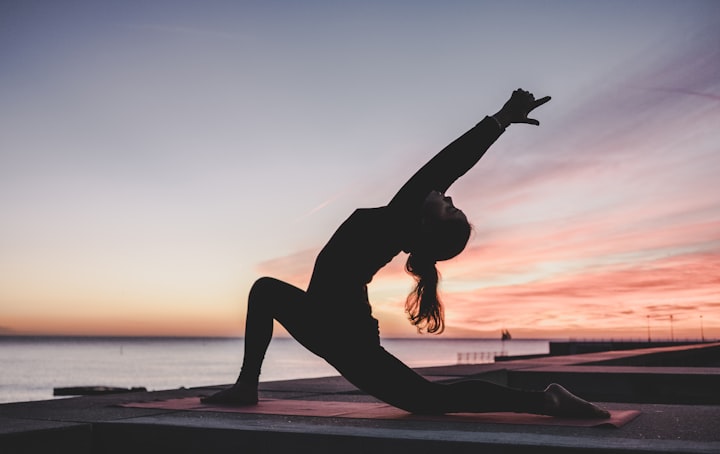Yoga and exercise are two practices that have become increasingly popular over the years, and are often considered as synonyms for each other. However, despite some similarities, there are significant differences between yoga and exercise that make them unique from one another. Understanding these differences can help you determine which practice is best for you and your lifestyle.
"Exercise ia an tribute to our Heart"
Exercise is primarily focused on physical activity aimed at improving health, fitness, and overall well-being. This includes activities such as running, weightlifting, cycling, and other forms of physical activity that are performed for a specific duration and at a specific intensity level. The primary goal of exercise is to improve cardiovascular health, build muscle, and burn calories.
On the other hand, yoga is a holistic practice that combines physical postures, breathing techniques, meditation, and mindfulness. It has its roots in ancient Indian philosophy and is designed to improve physical, mental, and spiritual well-being. Yoga poses, or asanas, are performed in a slow and controlled manner, with an emphasis on proper alignment, balance, and stability. The practice of yoga also includes pranayama, or controlled breathing, and meditation, which are integral parts of the practice.
One of the main differences between yoga and exercise is the pace and intensity. Exercise is often performed at a faster pace, with the focus on pushing your body to its limits and building strength and endurance. Yoga, on the other hand, is performed at a slower pace and emphasizes the connection between mind, body, and breath. This slower pace and emphasis on proper form can lead to a reduced risk of injury compared to exercise.
Another difference between the two is the approach to breathing. Exercise often focuses on short, quick breaths to maintain energy and endurance, while yoga emphasizes slow, deep breathing to calm the mind and body. This deep breathing, along with the mindfulness component of yoga, has been shown to reduce stress and anxiety, improve sleep, and boost overall mental well-being.
Yoga also offers mental and spiritual benefits that are not found in exercise. The practice of yoga encourages mindfulness, introspection, and self-awareness, which can lead to a greater sense of inner peace, self-confidence, and improved relationships. Yoga also provides a deeper connection with the self, as well as a deeper understanding and appreciation of the world around us.
"Doing yoga will get into the spritual life"
In terms of physical benefits, both yoga and exercise can provide similar outcomes such as increased flexibility, improved balance, and stronger muscles. However, yoga places a greater emphasis on balance, stability, and flexibility, while exercise is more focused on building strength and endurance. Additionally, some forms of yoga, such as power yoga and vinyasa flow, can provide a challenging physical workout, similar to exercise.
While both yoga and exercise have numerous benefits, they also have different challenges. Exercise can be challenging for those who are new to physical activity or have existing medical conditions, as the focus is on pushing your body to its limits. Yoga, on the other hand, can be challenging for those who are less flexible or have limited mobility, as the focus is on proper alignment and balance.
Conclusion :
Both yoga and exercise have their own unique benefits and challenges, and the best approach is to choose a combination of both. Exercise provides a great workout for the body, while yoga provides a holistic approach to physical, mental, and spiritual well-being. Incorporating both practices into your routine can lead to a more balanced, healthy, and fulfilling life. It's important to listen to your body and choose the practices that are right for you, and make them a part of your daily routine.
SOME TIPS FOR YOGA AND EXERCISE :
Yoga tips:
Start with a beginner's class or tutorial to learn proper form and alignment.
Focus on your breathing and try to maintain a slow, steady pace.
Listen to your body and modify poses as needed.
Incorporate mindfulness and meditation into your practice.
Consistency is key, aim to practice regularly to see the benefits.
Exercise tips:
Consult a doctor before starting a new exercise regimen.
Start with a beginner's level workout and gradually increase intensity.
Mix up your routine to prevent boredom and keep your body challenged.
Focus on proper form to prevent injury.
Stay hydrated and fuel your body with a balanced diet.
Make time for recovery and rest days to prevent overuse injuries.
Remember, both yoga and exercise should be enjoyable and not feel like a chore. Find what works best for you and make it a part of your daily routine!
About the Creator
Gopi M
"You can make anything by writing."
--C.S. Lewis






Comments
There are no comments for this story
Be the first to respond and start the conversation.